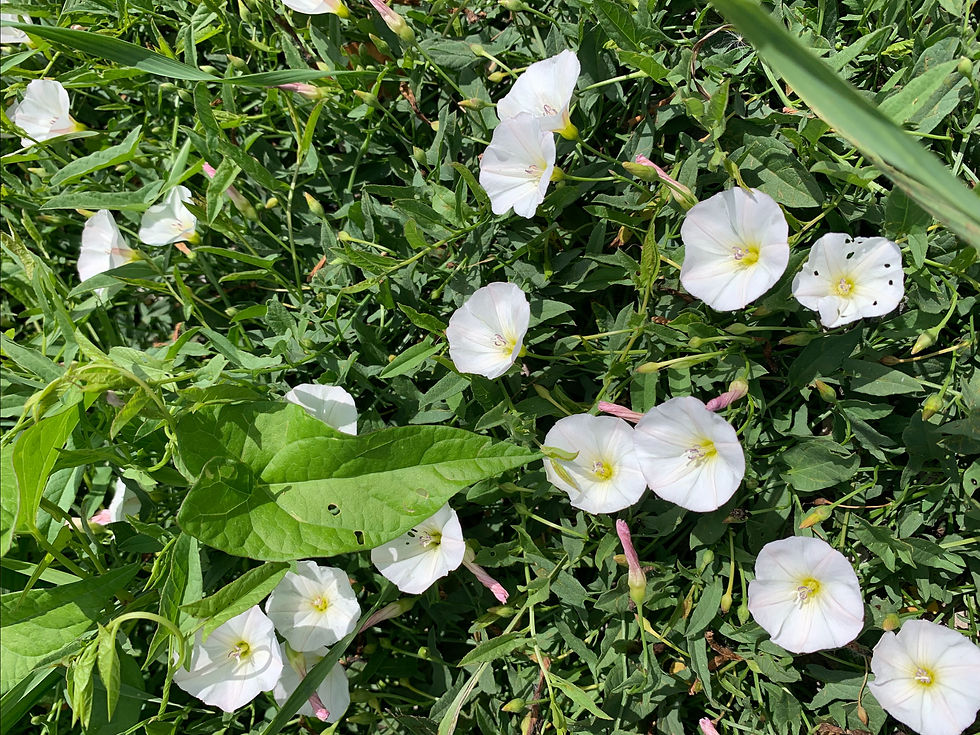Rose of Sharon
- secretary9526
- Sep 15
- 2 min read
Garden clippings for September 4, 2025
Convince me otherwise, but I’ve never had much appreciation for Rose of Sharon.
Their blooms, mostly in shades of pink, arrive in late summer, when little else is blooming. Their teacup-sized blooms are a magnet for bees and butterflies. Their flowers last longer than most flowering shrubs, with first buds opening in mid-August, finally giving up in late September.
Rose of Sharon (Hibiscus syriacus) is closely related to the perennial Hibiscus, often called Hollyhocks, producing dinner plate-sized blooms in mid-summer. The third relative is a popular tropical plant that will need to be brought indoors for winter.
If left unattended, Rose of Sharon will become a tall, leggy plant, reaching heights of 3 or 4 metres. Its overall shape is like a cone, wider on the top than bottom. I usually describe its shape as up-side-down, because most shrubs are broad at their base.
Rose of Sharon has a nasty habit of self-seeding. Flowers, with their seeds attached, drop in the fall and often sprout in unexpected places the following spring. The small seedlings are hardly considered weedy, because they are easy to remove.
In the USA, a few states, including Michigan, have been quick to put Rose of Sharon on their invasive species list. Us Canadians, being friendlier, have chosen to forgive Rose of Sharon’s habit of producing too many offspring.
Gardeners like me, who are not fond of Rose of Sharon’s leggy growth habit, should prune the shrub each spring to achieve a compact, tidy shape. And for those who are bothered by bothersome seedlings that sprout in spring, consider planting sterile varieties that don’t have nuisance seeds.
Rose of Sharon is a highly adaptive plant that is tolerant of heat, drought, and poor soil. Plant it in a location with full sun with well drained rich soil and it will thrive. If planted in a shady location Rose of Sharon will give you fewer flowers. Rose of Sharon does not tolerate waterlogged soil.

.png)
_edited.png)



Comments